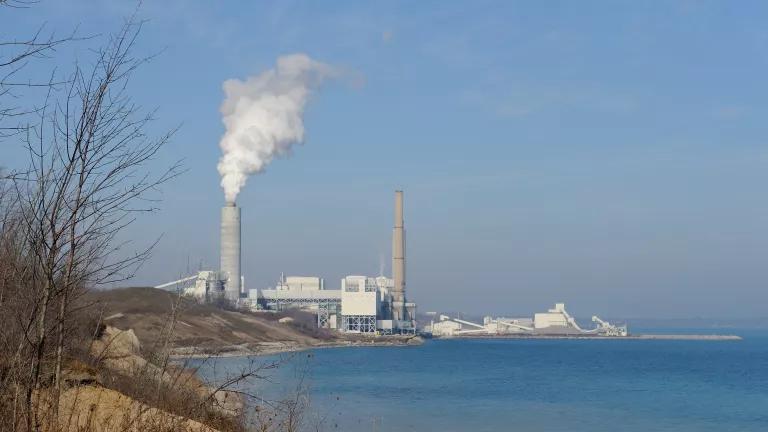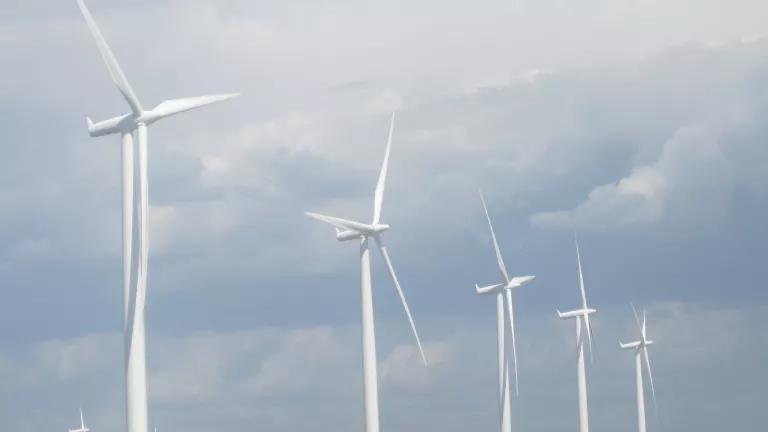A Year After Hurricane Maria, Puerto Rico’s Energy Future in the Balance
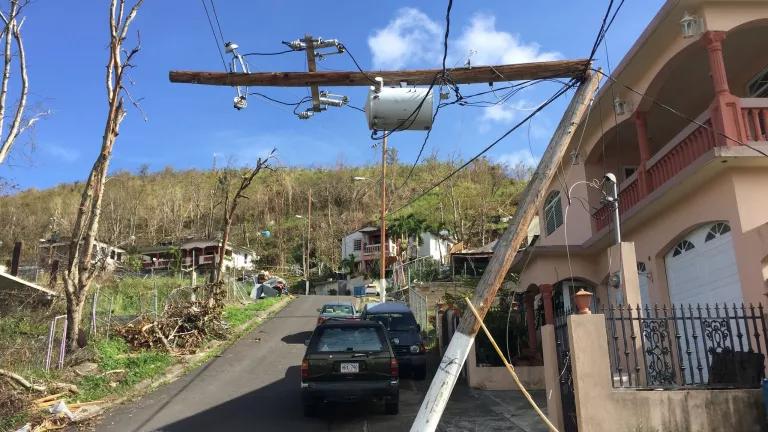
About a year ago as Hurricane Maria made landfall in Puerto Rico, I was on the phone with my parents who live on the island, fretting because even though I work to prevent climate change, I couldn’t be much help to them that day. All I could do was hear them rushing around trying to stop water—propelled by hurricane force winds—from coming into the house through any gap it found. A few weeks after Hurricane Maria devastated Puerto Rico, we got lucky and found plane tickets so my parents and sister came to live with me in North Carolina, while water and electric services were restored on the island. This week, Hurricane Florence has turned the tables—my parents now back in Puerto Rico, have been fretting on the phone as the storm approached North Carolina. The consequences of climate change are now impossible to ignore and can reach us anywhere.
Hurricane Maria made landfall near Yabucoa, Puerto Rico around 6:15am on September 20, 2017. In about 12 hours, it wiped out the electrical system of the entire island, incapacitated the neglected water infrastructure and dealt a severe blow to the moribund economy. Over the course of the next few months, more than 135,000 people left their homes and moved to the continental United States. During the long and difficult months after the storm, Puerto Rico has also dealt with a significant mental health crisis with high depression and suicide rates. The financial impact of Hurricanes Irma and Maria to the island is estimated at over forty billion dollars ($40,000,000,000). Finally, a year after the storm the Government of Puerto Rico estimates that 2,975 died as a result of Hurricane Maria and the impacts to the island over the subsequent months. Undoubtedly, this storm has been nothing short of catastrophic for the island of Puerto Rico. And as I sit in North Carolina, we yet do not know the full impacts from Hurricane Florence, but large areas of the state are underwater and reports of coal ash spills and hog manure spills are very troubling.
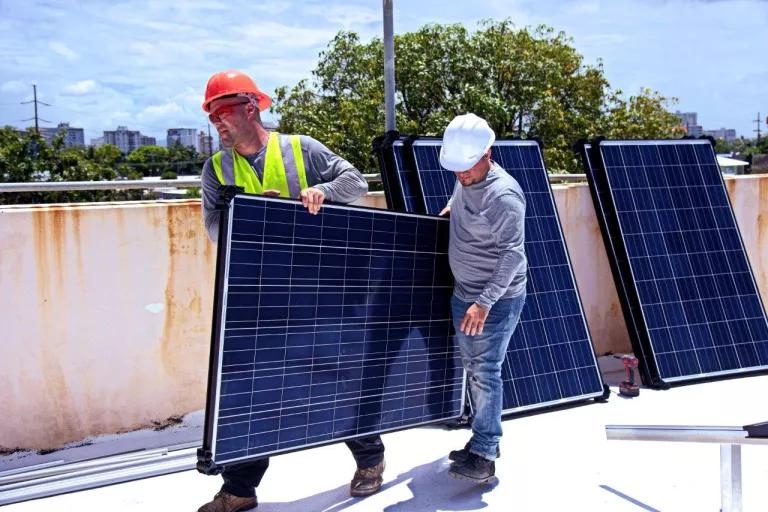
We know that we can no longer solely focus on climate mitigation policy, we must also work on adaptation, particularly improving the resiliency of critical infrastructure, like Puerto Rico’s energy system. To that end, NRDC has partnered with local groups, like Resilient Power Puerto Rico, to establish replicable renewable microgrids that help mitigate carbon emissions and improve the resiliency of energy infrastructure. Our first project now powers a community center in the Caño Martin Peña area, and we are currently working on a second effort on Vieques Island that would power a community radio station. Building resiliency requires evaluating risks and vulnerabilities and addressing them and powerful storms expose them abruptly. As Puerto Rico readies to reestablish the majority of its energy infrastructure, it now must turn from imported fossil fuels towards a clean distributed energy future.
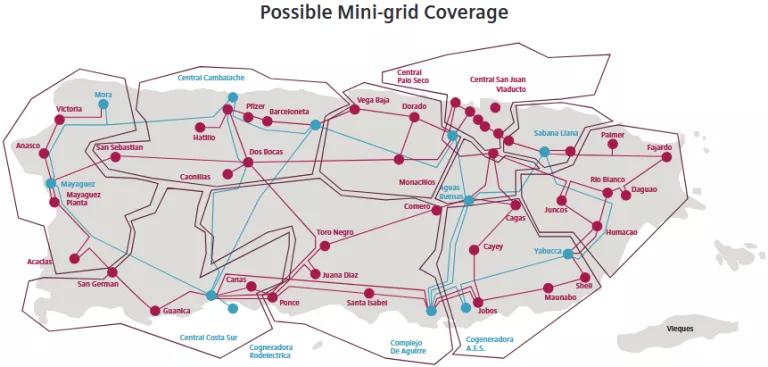
In the coming weeks, Siemens, the energy contractor for the Puerto Rico Energy Power Authority, should complete its draft of the integrated resource plan (IRP). The IRP is supposed to guide energy investments for the next five or ten years. If the white paper it released mid-summer is any indication, the draft plan will recommend creating several interconnected grids and incorporate significant distributed resources like energy storage and renewables. Hurricane Maria essentially wiped the slate clean. As Siemen’s states, last year’s tragedy should “offer Puerto Rico a rare and powerful opportunity to redesign its power system, producing a significantly more resilient grid by design that will ensure a steady flow of cleaner and higher quality power for its residents and businesses.” Puerto Ricans and interested stakeholders will have an opportunity to weigh in on their path forward over the coming months during the IRP proceeding. The island has a choice to make that will set the course for various decades or longer and must choose wisely.
As we live through the impacts of climate change, we must reduce our greenhouse gas emissions while increasing our resiliency. Renewable energy and battery storage microgrids should be the first step in that process. Specifically powering critical infrastructure (like schools, hospitals, storm shelters and others) with their own renewable energy and battery microgrids will greatly improve resiliency and reduce dependence on fossil fuels. There are dozens of these types of projects now in Puerto Rico and decision-makers should use them as guides for any new energy infrastructure.


